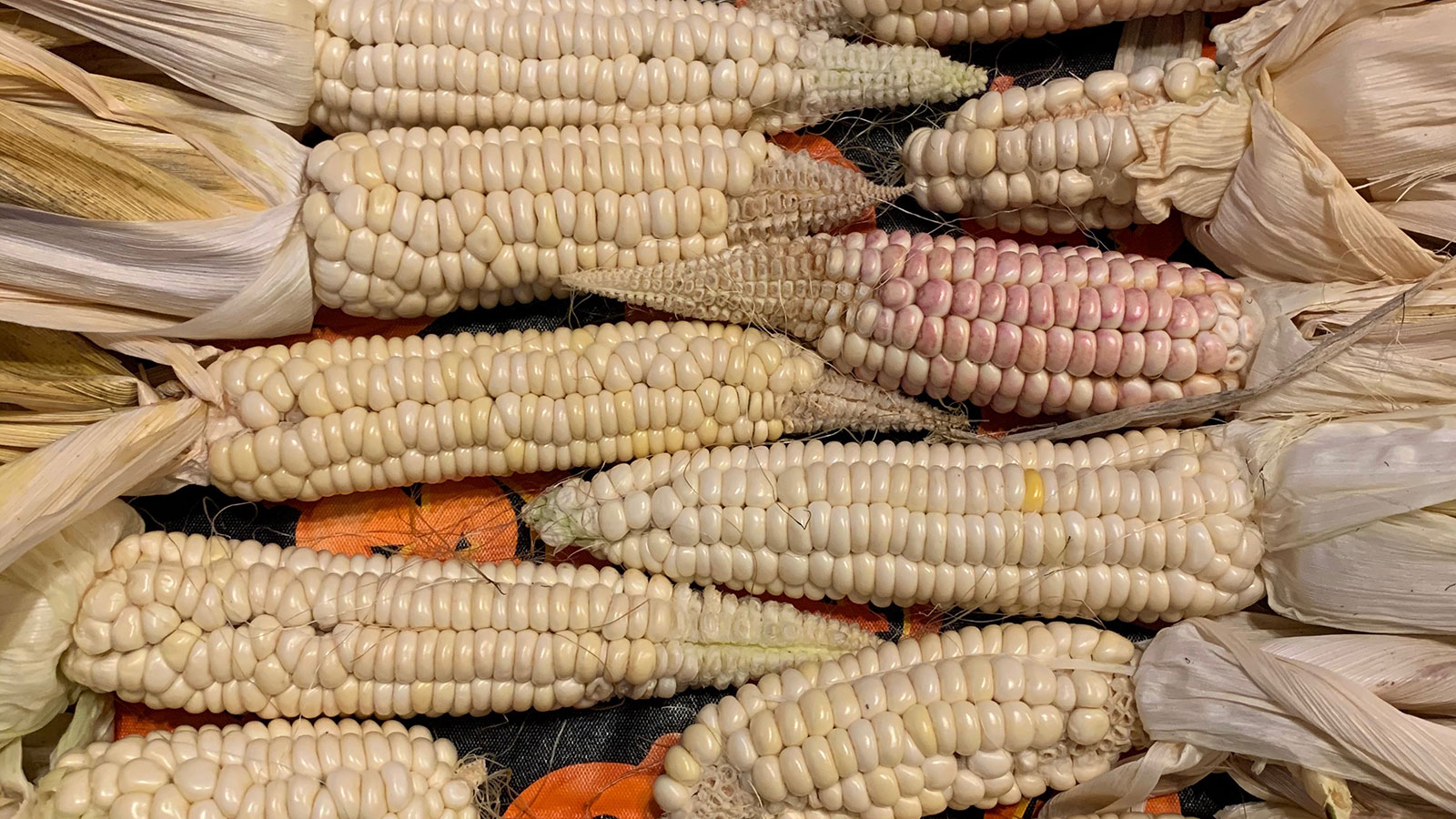Being an amateur native american historian, a gardener / farmer, and a former resident of western New York state, it was inevitable that I would have an interest in growing Seneca White Corn/Iroquois (“Haudenosaunee”) White Corn. Seneca Round Nose Corn is the name of the specific seed variety that we planted this year (2019). Seed for Iroquois White Corn is hard to find. It seems that the sales of the seed is somewhat protected. The Seneca Nation of Indians do not sell the seed, but do sell Iroquois White Corn products through the Iroquois White Corn Project (“Ganondagan”). So far we have found three seed sources although the names and descriptions are slightly different. We believe they may all be the same variety, but we will have go grow them to form a better opinion. We planted the “Seneca Round Nose” corn in 2019. This corn has to be isolated when grown to keep the genetic purity of the seed. We will grow a second variety in 2020 and a third in 2021. This year we only had a about 50 seeds to plant that were 5 years old, but we did get excellent germination and did produce a small crop; certainly enough to use and also save seeds for future planting. All non white seed will be used or discarded. Some of our ears have a pinkish purple color or a yellow kernel or two.
We planted late this year due to a cold wet spring. That along with a few other growing issues caused our ears not to fill out completely except for one full ear. The stumpy ears will not affect the seed quality except for a small percentage of kernels.
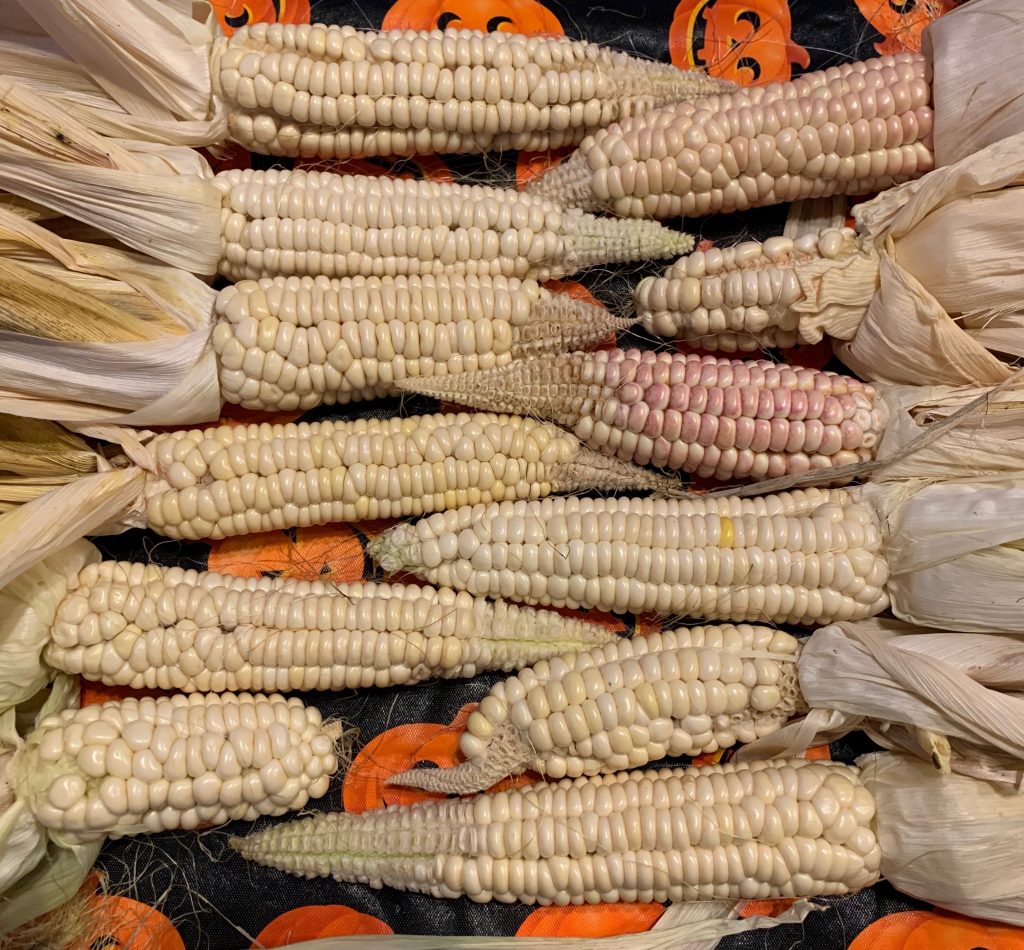
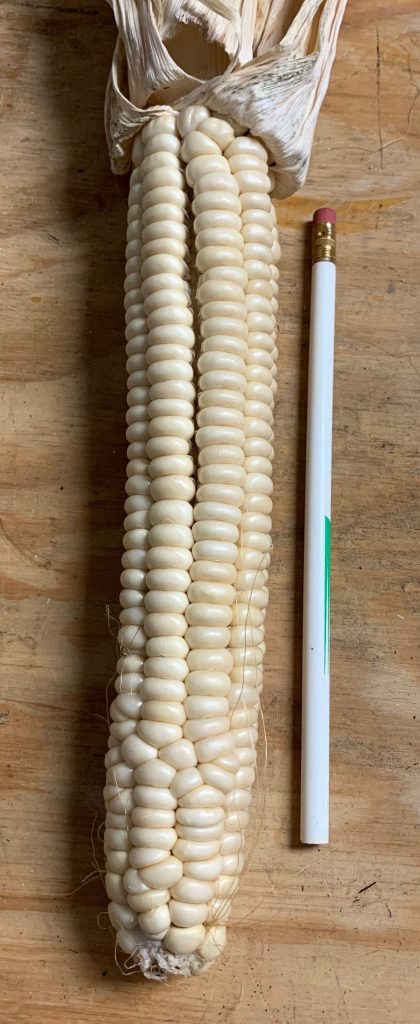
We planted in “hills” this year in what may have been an Iroquois tradition. My parents used to tell me that the Iroquois grew the corn in hills with 4-5 plants per hill and that they would bury a dead fish under the hill before they planted to fertilize the seed. The fish would release nutrients as the fish decayed and the corn plant grew. This story may or may not be true, but it makes sense. It would require a lot of fish to plant a field of corn even in hills.
We planted late and in a somewhat shady area. This was necessary for us because we had lost previous crops to raccoons and deer. This time we planted within a 4 strand electric fence to protect the corn. Next year we will plant in rows for better light and less root completion, We may have less plants but hopefully higher quality full ears to harvest. We planted pole beans along side the corn plants and squash in the next row, in a way imitating the Iroquois corn-bean-squash trilogy (“Three Sisters”). In our case, the pole beans grew up our corn stalks, as expected, but also pulled down some of the stalks and reduced our corn ear production a little bit. This would not be a significant problem in a big corn field.
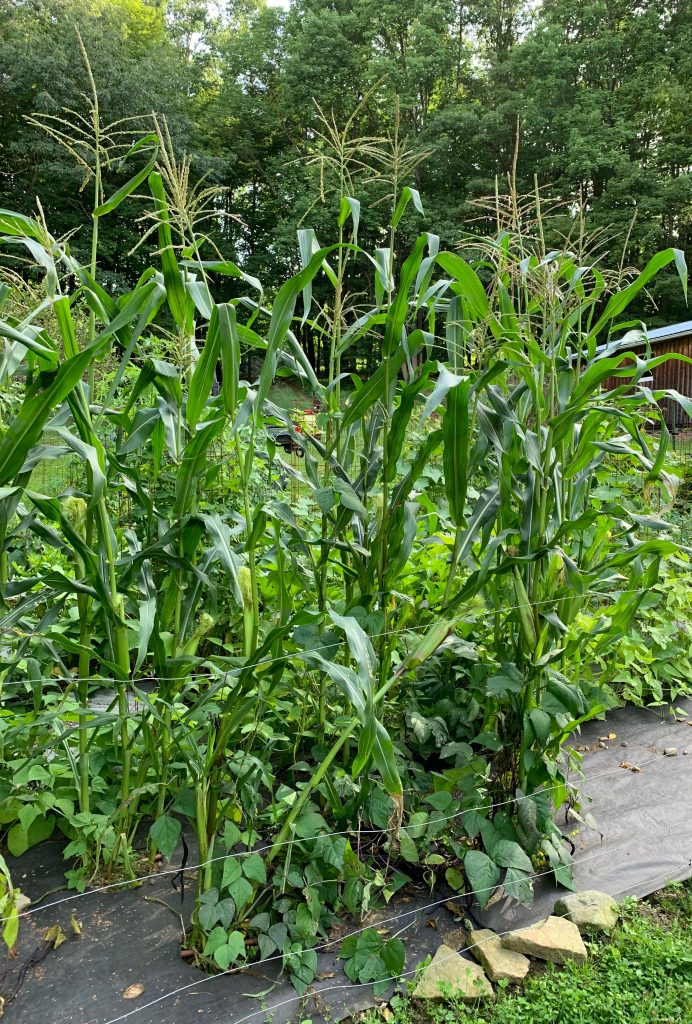
This corn is not a hybrid and can be replanted from year to year and you will get the same corn. You can replant your own seed. Even though you can buy and/or plant one of hundreds of varieties of sweet corn with long lasting sweet flavors, we picked one ear and made corn on the cob. The ear was just a little past its prime for sweet corn, maybe just a little doughy, but it tasted very good when picked and boiled it immediately. We put butter and salt on it and it did not taste much different than current sweet corn varieties just not quite as sweet. But still very satisfying.
Iroquois white corn is non-GMO (genetically modified organism), low in sugar, high in fiber, high in protein, gluten free, has a low glycemic index, is packed with amino acids and releases carbohydrates slowly. Consuming Iroquois Corn products may help to improve diet related health issues.
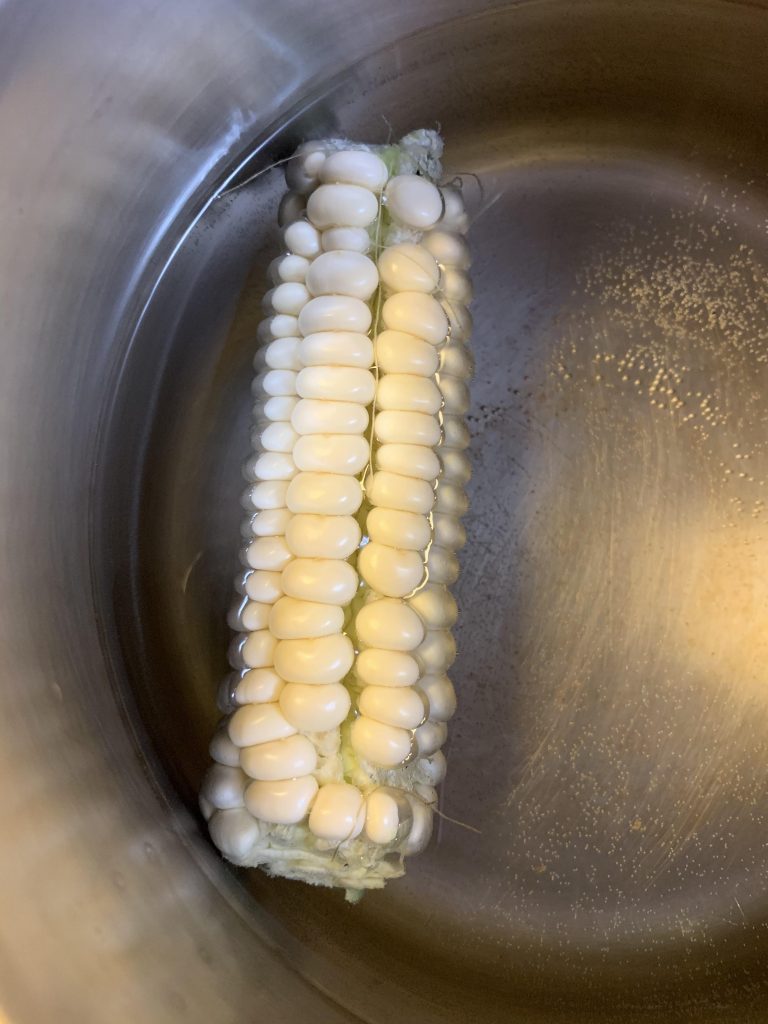
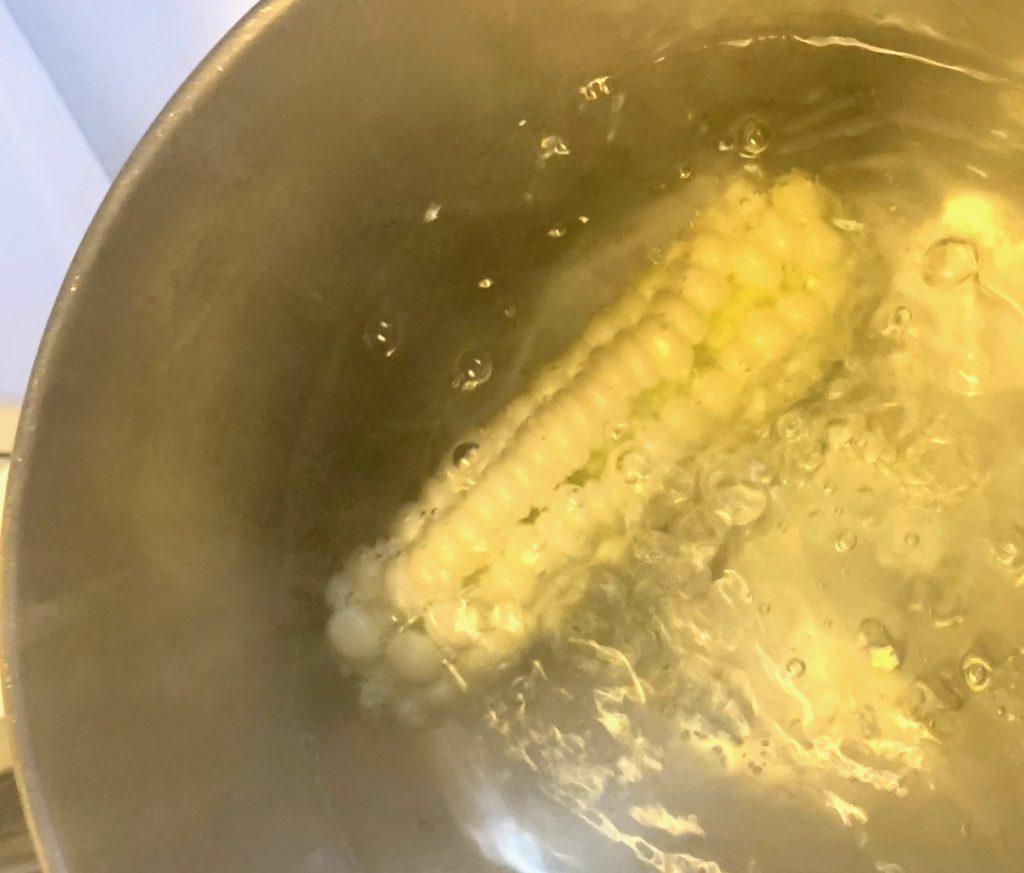
Our farm is just 8 miles from Houghton, NY where a major Seneca community once flourished. It was very satisfying to imitate, on a small scale, what they did every year, not so long ago. The Iroquois or there predecessors were the first to cultivate this land and grow this type of corn which has been planted for 1400 years and possibly longer. The Seneca are still planting this corn.

